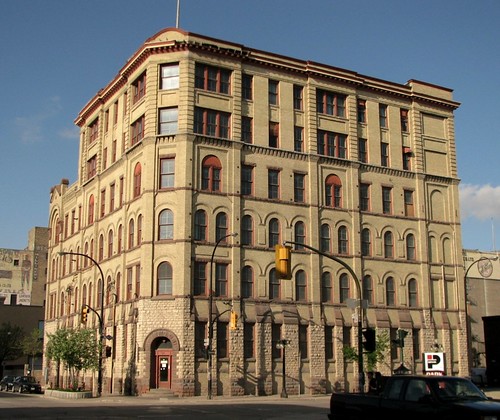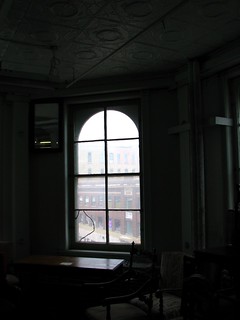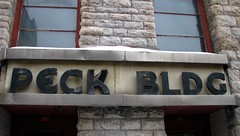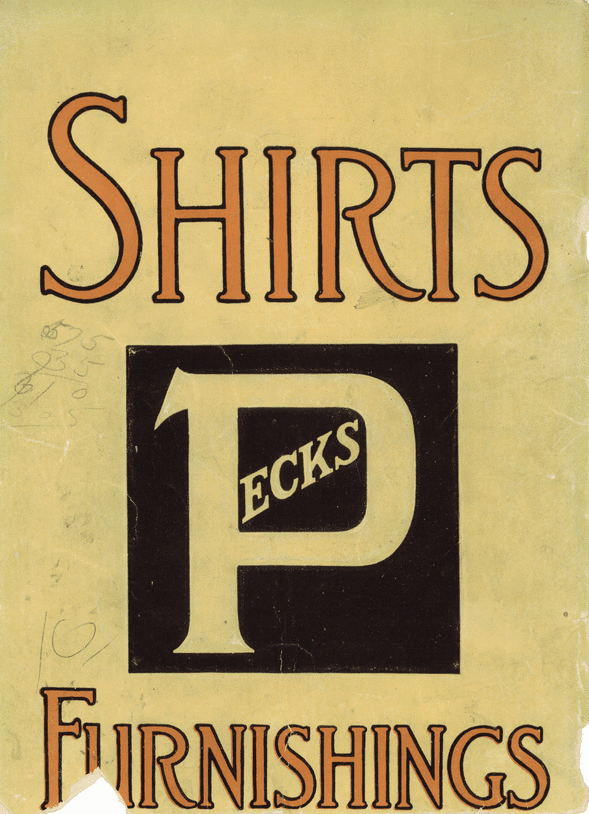Place: The Peck Building
Address: 33 Princess Street Map
Opened: 1893
Architect: Charles H. Wheeler
Background
Top: circa 1903 (Virtual Heritage Winnipeg)
Bottom: October 15, 1892, Winnipeg Tribune
The roots of the John W. Peck Company of Montreal go back to 1880s Winnipeg and a business partnership between John W. Peck, a sales representative from eastern Canada, and Winnipeg businessman J. D. Carscaden.
In 1881 they decided to go into business together on a clothing wholesaling company named Carscaden and Peck. They were one of the original tenants of the Odd Fellow's Hall at 72 Princess when it opened in 1884.
A decade later, they purchased what was known as the "Watson property" at Notre Dame Avenue and Princess Street and hired architect Charles Wheeler to design their new headquarters.
At 100 feet by 92 feet and four storeys tall plus a basement, it was the largest warehouse built in the city, beating out Galt's by an entire floor.
In 1881 they decided to go into business together on a clothing wholesaling company named Carscaden and Peck. They were one of the original tenants of the Odd Fellow's Hall at 72 Princess when it opened in 1884.
A decade later, they purchased what was known as the "Watson property" at Notre Dame Avenue and Princess Street and hired architect Charles Wheeler to design their new headquarters.
At 100 feet by 92 feet and four storeys tall plus a basement, it was the largest warehouse built in the city, beating out Galt's by an entire floor.
Construction got underway in Spring 1893 but things quickly bogged down. There was so much construction going on in the city that there was a severe brick shortage. A new brick yard was opened in St. Boniface in June, which helped increase the supply.
Each floors, only four of them originally, has 28 windows to allow for a maximum amount of natural light and air movement. It also featured an electric elevator and lights, water closets on each floor and a speaking tube system - an early form of intercom.
In January 1900, fire destroyed the upper floors of the north section of the building. A stone firewall saved the entire building from going up in flames. The building was rebuilt with two additional floors.
October 28, 1916, Winnipeg Tribune
Cascaden, the senior partner, left Winnipeg to manage a new Vancouver branch in 1890 and retired in 1894. The company was renamed John W. Peck and Co. with Peck and Alexander Bethune, who had worked in the company's finance department, as partners.
Around 1905, the partners moved to Montreal and built a large manufacturing plant and soon relocated the firm's headquarters there. They kept branches in Winnipeg and Vancouver.
At its peak in the early 1910's the company employed about 2,000 people across the country, not including travelling salesmen.
At its peak in the early 1910's the company employed about 2,000 people across the country, not including travelling salesmen.
Peck pulled out of most of the building in 1927, deciding to do most of their wholesale operations from Montreal. The company went out of business during the Depression but the building remained home to a large number of garment trade companies, including Sterling Stall, for many decades to come.
Around 1990 it became home to the Antique Exchange.
In recent years there have been a couple of failed redevelopment attempts.
In recent years there have been a couple of failed redevelopment attempts.
Source: Sceintologynews.org
In March 2007 the Church of Scientology bought it for a reported $2.2 million. They planned to spend $10 million to convert it into a church, outreach centre and regional office. That, too, never materialized.
Related:
My Flickr album of the Peck Building
To read a 1915 era Peck's wholesale catalogue, see Peel's
33 Princess - Historic Buildings Committee Report
33 Princess - Winnipeg Building Index









No comments:
Post a Comment